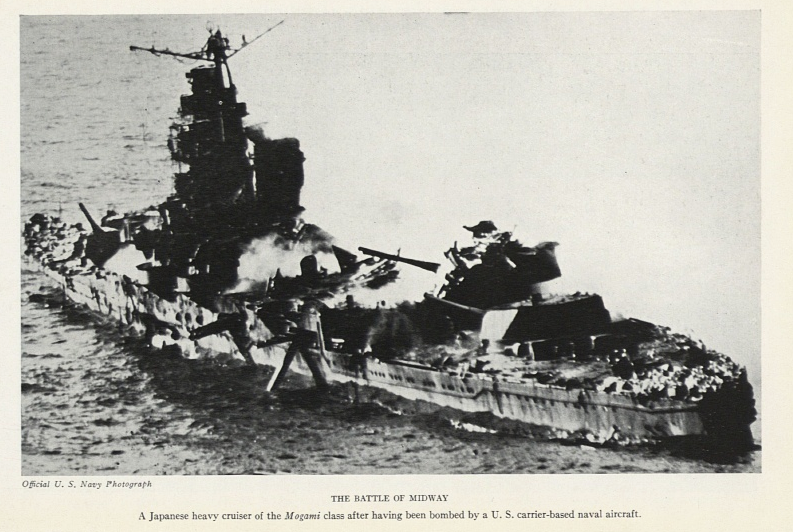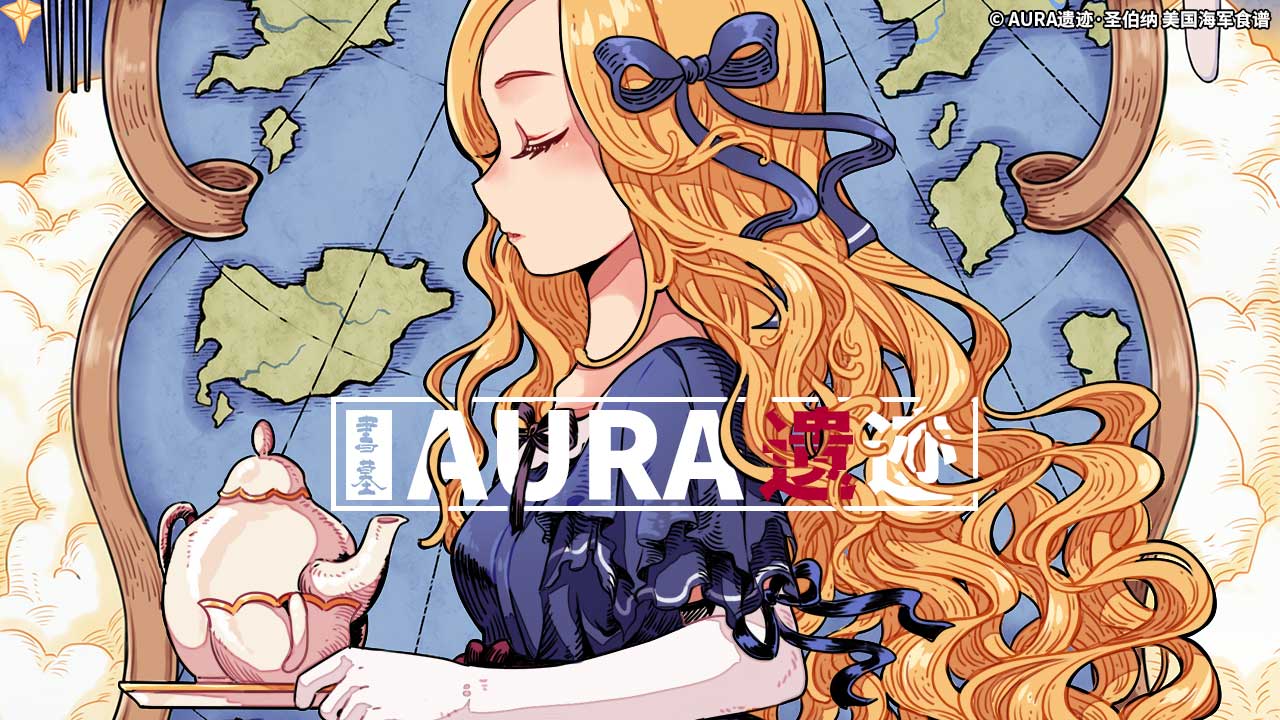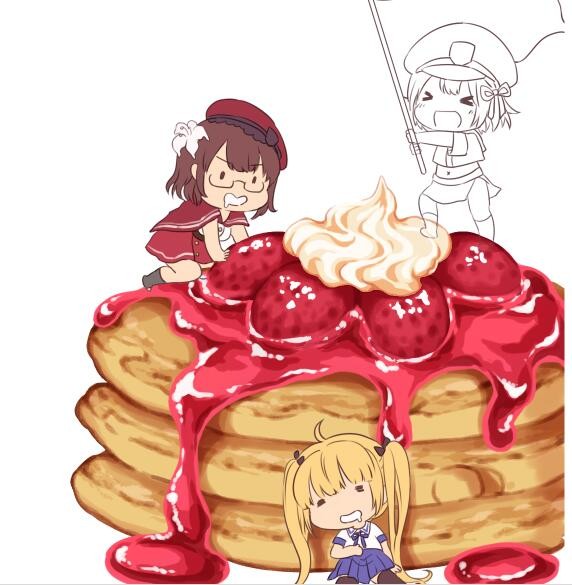
Am I orange this time?
Yeah. I think you are. I’m gonna be red… or maybe just normal color this time. I think it’s kind of weird that we always switch colors, though…
I honestly was not expecting you to be so … Please, don’t take this the wrong way, Tambusebär but I did not think that you would be so thoughtful.
Underestimate the Tambor at your own peril, ya no-good kraut, haha! This one’ll be fun.
Hi! Tambor here. I have Dracha and Hata with me today. Sorry if you were expecting Tautog’s commentary on the London Naval Conference. Since she’s busy trying to figure out ways to make it seem like we aren’t too biased against CERTAIN powers, the three of us sat down and thought we’d talk a little about food!
After all, everyone likes food! As Tautog said in an earlier post, food is what makes life on a submarine much more bearable. What we’re going to do today is to have the three of us describe to you what an average menu would taste like (little hint, St. Bernard! You should totally draw this out) based on historical documents we’ve scrounged up regarding submarine cuisine.
These are respectively:
A Type XXI Supply Document (summarized by the US military)
A Tambor-class supply log (actually, it’s the Tautog’s stores!)
A I-15 class assessment report (since not much information survived off of late-war Japanese submarines)
To maximize (yes, you read that right!) bias, we’re having Hata eat the American menu, Dracha eat the Japanese menu, and I get the U-boat one.
This’ll be fun! I REGRET NOTHING!
(Tambor’s account)
Gaaaaaaah I regret EVERYTHING.

I should have gotten Dracha to get me an early war menu, where the Germans might have actually had all-edible food as opposed to that fake meat thing. As it stands, dinner consisted of:
- A really good pork sausage. Yum.
- Some kind of pork sausage that doesn’t taste like sausage. A closer inspections reveals something called Bratlingspulver. It’s a soy-based mock-meat filler. Ugh.
- A pound of (somewhat burnt) baked potatoes loaded with bacon and ham bits. Not sure if this is just Dracha can’t cook or if it’s supposed to be that way, but this one tasted fine.
- A chopped up dish of gherkins. Dracha says that these are surprisingly enough well-received by the crew. Kind of vinegary but it tastes German enough…
- For drinks, a sweetened red tea that tastes kind of like our southern-styled ice tea back home, to be honest…
- Some kind of very hard hard-bread cracker with a marmalade I can’t quite figure out. Maybe apple? Strawberry? The cracker was very tough and nearly impossible to bite into.
Overall, I was glad to have avoided the legendary horror that’s the “one-pot stew.” Apparently it’s welcomed by U-boat crews but no one else in particular. Personally, I was expecting a whole lot more meat since it’s supposed to be German and all…
However, it seems that the largest amount of food carried were indeed tinned meats (Bratlingspulver-added or otherwise), potatoes, and “preserved breads” (which I can only assume was the cracker-thing that I ate). I’m not sure of the quality of the canned vegetables, but apparently it wasn’t very well liked.
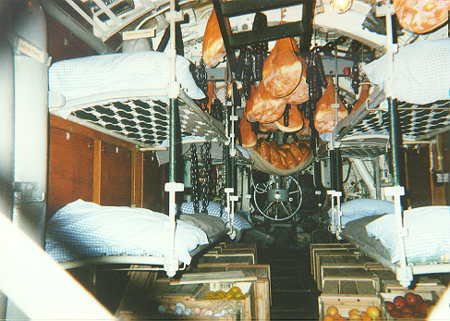
(Here’s a picture I found from U-boat.net. Looks like they had plenty of creative ways to store their foods. Hmm… I wonder why Dracha didn’t give me an apple or an orange or something… That picture looks like there’s definitely plenty of fruit…
Unless fruits go bad fast too… I wonder how fast apples spoil inside a U-boat.)
Overall. Taste? 3 out 5. Portions? 5 out of 5. I think this was fine. Man, I kind of want Trout to make some brats for dinner tonight now…
THIS IT?
SHEISSE, WHERE IS POTATO????????
I UNDERSTAND TINY MENU IS FOR TINY JAPANESE PEOPLES BUT THE PORTIONS ARE TINY!

No, Dracha, you just eat a whole lot. The IJN’s wartime caloric allotment was in the region of anywhere from 3200 kcals to 3600 kcals, which was on par with the calorie standards of other navies…
T-taugogtau –
It’s also rude to talk with your mouth full of food like that. Also did you forget? This is my sub-corner after all. Just because I’m busy doing research doesn’t mean I can’t pipe in and provide useful commentary, where I’m sure all our readers appreciate.
S-sorry! I wasn’t trying to talk. It’s just this … RICE! THINGIE! It’s REALLY hard to eat. It’s hard and doesn’t taste like rice at all!
That’s because it’s barley rice. Typical ratio is 2 portions of barley to 1 portion of rice for the surface fleet. Hata says that most submariners still had to purchase their own food supplements, and nobody have the money to afford eating “silver rice” – what you and I call white rice every meal – with the exception of maybe some very wealthy officers.
*STARES*
I DEFINITELY see more grains of white rice here than 2:1, Tautog.
Japanese submarines have a much high portion of white rice, per meal, compared to anything else on the fleet. Think of it as hazard pay or a morale booster. However, barley mixed rice is still common enough that it appears on the menu fairly regularly. During earlier periods white rice may be far more common (in fact several commanders can attest it being almost for every meal!), but the evidence we obtained is sourced in 1944 – well into the losing portions of the Pacific War.
There’s no potato… no meat… waah… Those pickles are tiny and the black sauce tastes really off…
You ate the meat already.
H-Huh??? You mean that tiny canned thing?
Yeah. Also, it wasn’t tiny. It was 500 g and you ate two of them in that stew-like dish. Normally Japanese submariners don’t just get canned, pre-made meat meals. Those were special. You just ate enough meat for four, and it’s generally stretched out into a stew or a curry.
… They didn’t taste like anything to be honest. Kinda bland and salty. The meat’s texture was also really weird. Say, Tautog, do Japanese canned fish taste better? I just realized that it’s not common at all over this side –
We have canned tuna but nobody really likes it much.
Yeah. Tambor’s right. Typically canned tuna is easy to get in the US side, but it’s really just meant as a sandwich filler more than anything else. The Japanese sort of canned sauced fish or deboned raw fish is interesting precisely because it’s different. Normally, preserved, fresh, or whole fish is common. Below is a picture from a Japanese military manual showing new recruits how to properly fillet and process fish.
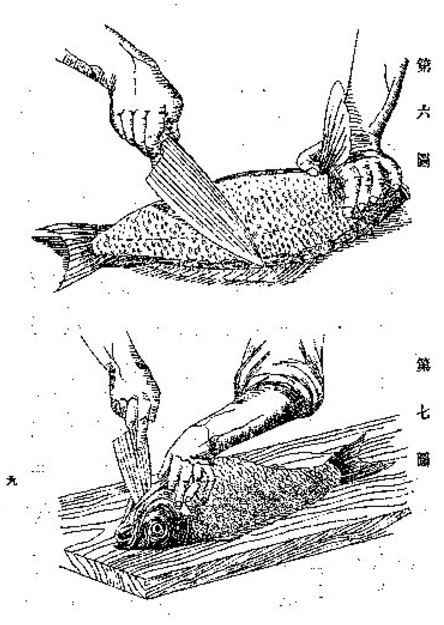
However, submariners often had to deal with canned goods. Take a trip to the local Asian supermarket and look for their canned stuff. It won’t be too different from what the Japanese submariners ate historically.
… I have to say I really didn’t like it. At all. The whole meal, I mean. We eat rice too, but it’s nothing like the way the Japanese submariners make it. The meat was cold and it didn’t taste very good. The pickles are really flavorful, but they were really tiny. The black sauce tasted horrible! It was like burnt leather, only saltier and smellier. The only thing I liked was their soda-pop. It was zesty and lemony and tasted really good. Just like the sodas we get on Avalon these days.
Also, why didn’t they have dessert?
OH. ALSO. I HAD A BEER. IT WAS WEAK AS SHEISSE. WHOEVER DECIDED TO CALL THIS STUFF BEER SHOULD GO DO THE SAMURAI SUICIDE THING BECAUSE IT’S AN INSULT TO BEER. I AM ACTUALLY KIND OF OFFENDED NOW.
Er, first of all, the black sauce you had was supposed to be miso. Apparently based on the two sources we could find, many Japanese submariners disliked the miso supplied to them. They preferred other canned sauces or non-canned soy sauces instead.

Secondly, dessert items were considered to be “extra” menu items. It’s kind of like their midrats. Plenty of bean breads and baked goodies or other sweets, but only for specially qualified individuals. For the matter, it wasn’t very good either. Unlike the plethora of baked goodies you see on a US submarine, most Japanese baked items were basically … bread plus sugar.
Literally plus table sugar. You’ll see plenty of menu items like “bread with canned red bean paste” or “bread with sugar sprinkles” or “bread with sugar sprinkles plus extra sugar rations.” Other common dessert items such as Mitsumame (think of these as jelly) and Yokan (another jelly-paste like dessert made out of red bean paste) are generally served at the commander’s discretion.
Beer… I have no idea. Some sources mention the alcohol rations are often diluted on occasions, and other than that I haven’t heard anything about Japanese beers being “weak.” Hata?

Freshly baked bread every day. Not a single meal without good meat. Choices of beef, pork, chicken, wow. Desserts all the time. Huge mix of fruits, vegetables, and … waw…
Fresh! Milk! Ice cream!
Easy there hon. Fresh milk isn’t that common. It’s generally only available at the beginning of a patrol or in port. It’s definitely something you miss, though.
T-Tautog, I’m gonna make some gaijin home-guard who harbors a far too romanticized view of everything Japanese mad by saying this, but this food is really, really good!
Of course. Pic related. It’s a reenactor showing everyone what cooking on a US WW2 submarine looked like! If I have my way you’ll see an entire mini-series within the Navy foods mini-series too! All about cooking on a submarine, mwahaha!
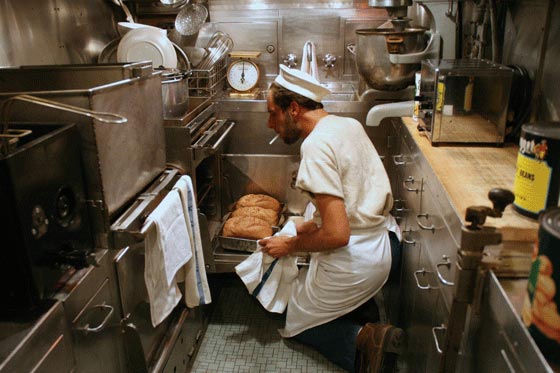
(The source is from the USS Cod!)
Hope you had fun reading that, everyone. See ya next time!
…Shouldn’t Tautog be the one closing this off?
Actually I’m kinda hungry now. Besides, it doesn’t count as a hostile takeover if I approve wholeheartedly of its contents!
Wait, so were there sub corners that weren’t approved?
No, I mean, not that way. It WOULD be nice if Dolphin doesn’t randomly barge in and go MURICA on everyone though. I’d also like to keep it as related to submarines as possible, so no random Prisse-Zuizu-Marby or whatever/whoever else coming in talk about the things they like.
See ya next time!


